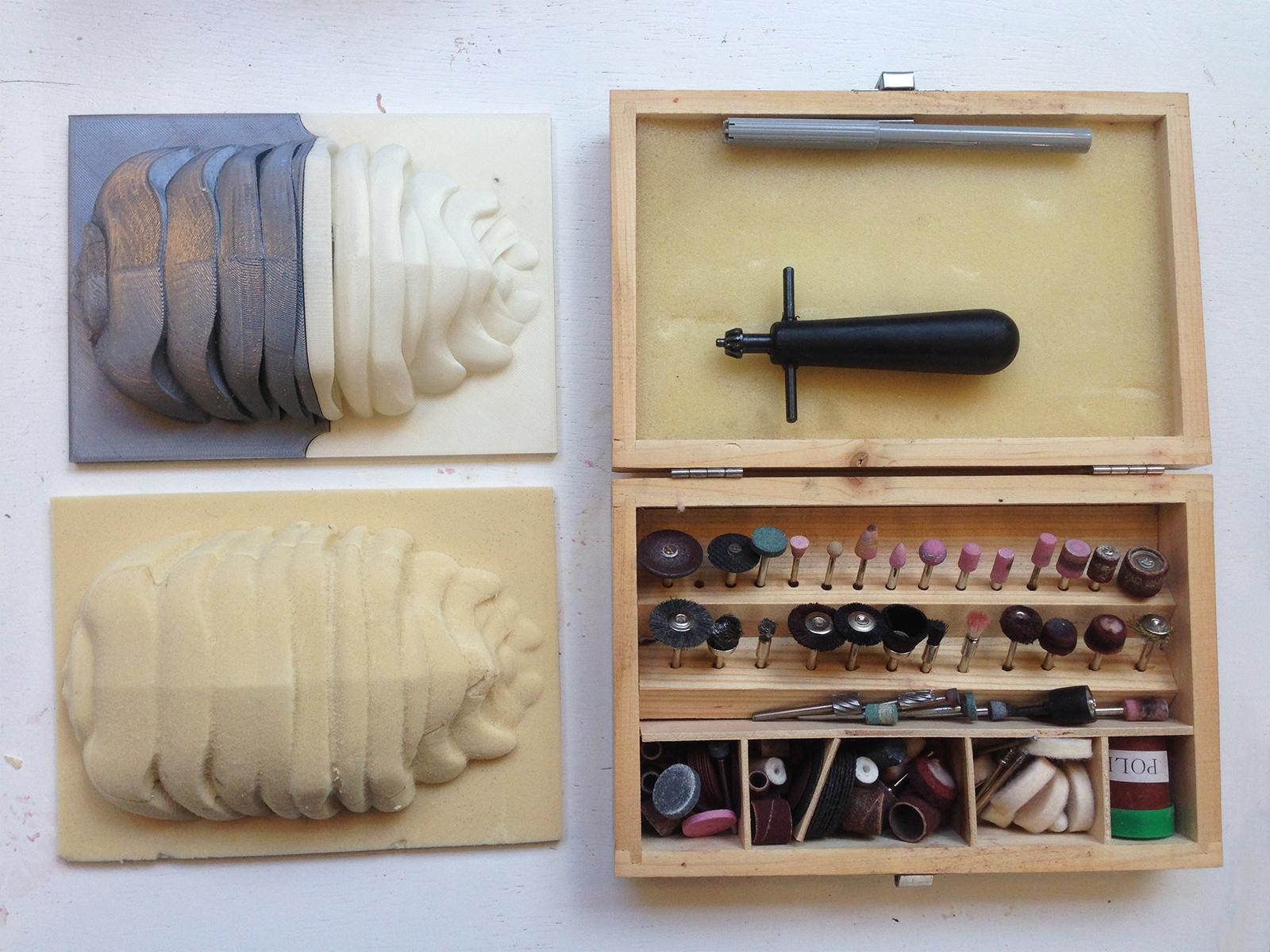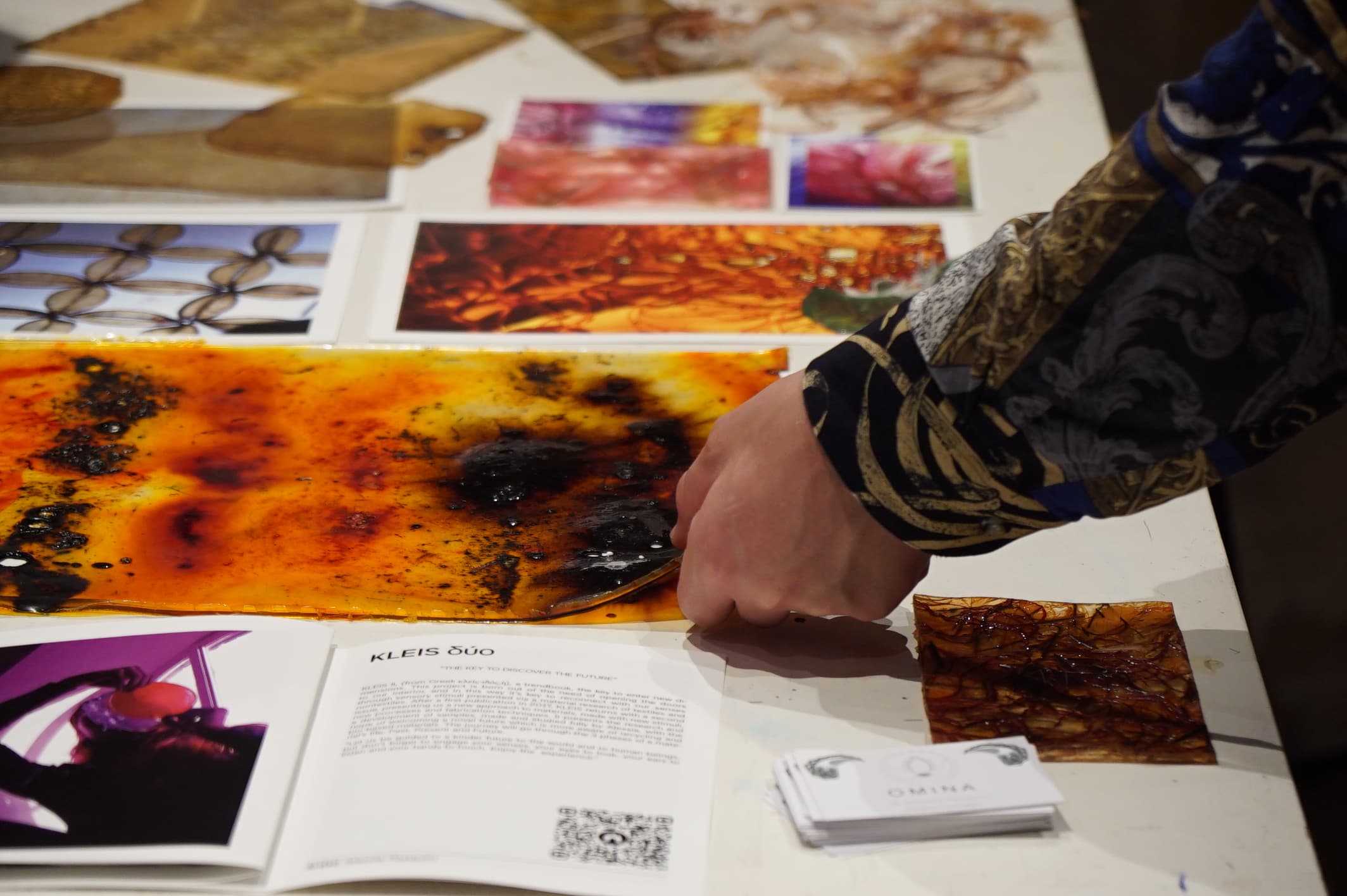Meet Laura Muth, who is currently doing a research internship at Waag’s TextileLab Amsterdam. Laura studies product design at the HAWK in Hildesheim, Germany and for three months she does research into different kinds of leather.
In her blog below she explains more about her research at the lab.
"Leather is one of the first materials that human beings used and worked with. It is a supple, tough, relatively strong, durable and versatile material and it is relatively impermeable, yet breathable. For the production of leather, theoretically any animal skin can be used. Nevertheless, the leather of cattle, calves, sheep, goats and pigs is mostly used as they are, it is a by-product of the food industry. Leather is used for a wide range of products, varying from furniture, clothes, and accessories to products for the automobile industry.
Pollution by leather production
The production with leather comes with a lot of problems. Tannery wastewater contains huge amounts of chemicals and pollutants such as chromium salts, lime mud, sulphides, acids, lead, cyanide, and formaldehyde. Not only the people in the tanneries and those who wear the leather come in contact with these poisons, but they also accumulate in the groundwater.
Alternatives
During these months I am doing research into the history of leather, the different working methods, but especially into the alternatives for leather and its manufacturing processes. I focus on alternative leathers like kombucha-, mycelium- and fish leather. I work towards a small collection of 3D embossed purses and backpacks. The shape of this collection is inspired by the insect kingdom, especially the pillbug (see the image below)."



